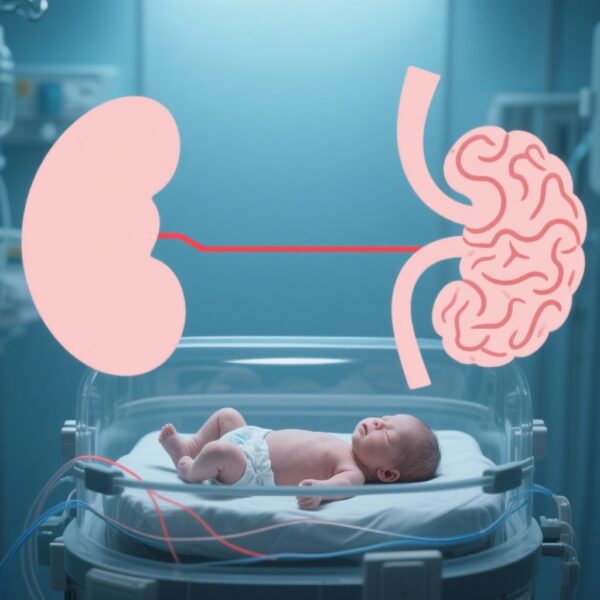Highlight
– The ConVenTu randomized noninferiority trial randomized 305 children (age 3–10) after ventilation tube (VT) insertion to either GP observation or routine ENT follow-up.
– Two-year audiometric outcomes (change in pure-tone average) in the GP-observed group were noninferior to ENT follow-up (between-group difference 0.16 dB; 1-sided 97.5% CI lower bound −1.52 dB; noninferiority margin 5 dB).
– No increase in complications was observed with GP follow-up, suggesting task-shifting may be safe in otherwise healthy children and could reduce specialist workload.
Background
Tympanostomy tube insertion (ventilation tubes, VTs) is among the most common ambulatory surgical procedures in childhood. Indications include recurrent acute otitis media and persistent otitis media with effusion causing hearing disability. Postoperative follow-up often occurs in specialist (ENT) clinics and can be protracted, consuming clinical resources and clinic time. There is limited high-quality evidence to guide the optimal level of postoperative surveillance in otherwise healthy children.
Study design
The ConVenTu (Control of Ventilation Tubes) trial is a multicenter, pragmatic randomized noninferiority trial conducted across six ENT departments in Norway. Eligible participants were children aged 3 to 10 years undergoing VT insertion for clinical indications; exclusions included major comorbidities and hearing loss >50 dB in at least one ear. Recruitment occurred from August 15, 2017, to August 30, 2021.
Participants were randomized 1:1 (block randomization, stratified by center) to either postoperative observation by their general practitioner (GP arm) or routine ENT follow-up (ENT arm). Audiographers conducting 2-year pure-tone audiometry were blinded to allocation. The primary endpoint was the difference between mean pure-tone averages (PTA) measured at baseline (inclusion) and at 2 years after VT insertion. The prespecified noninferiority margin was 5 dB. Secondary outcomes included audiometric and tympanometric resolution and recorded complications at follow-up.
Key findings
Enrollment and follow-up: 305 children were randomized (153 to GP observation; 152 to ENT follow-up). Median age was 4 years (IQR 3–6), and 60.7% were male. Two-year audiometric controls were completed for 145 children in each group, indicating high retention.
Primary outcome
The between-group difference in the primary outcome (change in PTA from inclusion to 2 years) was 0.16 dB. The one-sided 97.5% CI lower bound was −1.52 dB, which lies well within the prespecified noninferiority margin of 5 dB. By conventional interpretation for noninferiority trials, observation by GPs was noninferior to routine ENT surveillance with respect to long-term audiometric outcomes.
Secondary outcomes and complications
Secondary outcomes (audiometric and tympanometric resolution) showed no clinically meaningful differences between arms. The total number of patients with registered complications did not differ significantly (odds ratio 0.67 with a one-sided 97.5% CI lower bound 0.39), indicating no increase in adverse events associated with GP-led follow-up.
Statistical and methodological strengths
Key methodological strengths include randomized allocation with stratification by center, blinding of audiographers to reduce measurement bias, and a clinically sensible noninferiority margin (5 dB)—a commonly accepted small difference in hearing thresholds. The pragmatic design increases real-world applicability and the sample size and retention support the reliability of the primary outcome.
Expert commentary and clinical perspective
The ConVenTu results are clinically meaningful. Pure-tone average is a direct, objective measure of hearing and is relevant to the primary therapeutic goal of VT insertion: restoring or preserving auditory function. Demonstrating noninferiority in PTA over 2 years supports the safety of delegating routine postoperative surveillance to primary care providers for children without comorbidities or severe baseline hearing loss.
From a health systems standpoint, the findings provide evidence to support task-shifting of routine postoperative visits from ENT clinics to general practice. Potential benefits include reduced specialist clinic burden, shorter wait times for new referrals, and lower costs. However, translation into practice requires infrastructure and training: GPs should have clear protocols for detecting complications (persistent otorrhea, early tube extrusion with recurrent effusion, suspected cholesteatoma, persistent hearing impairment) and for timely referral back to ENT services when needed.
Guideline alignment
These findings align with guideline recommendations emphasizing individualized postoperative care and the importance of monitoring hearing and complications after VT placement. The American Academy of Otolaryngology–Head and Neck Surgery Foundation (AAO‑HNSF) clinical practice guideline on tympanostomy tubes in children recommends follow-up to assess tube function and hearing but does not mandate specialist-only surveillance; ConVenTu supplies randomized evidence in favor of primary-care–based follow-up for selected children (Rosenfeld et al., Otolaryngol Head Neck Surg. 2013).
Limitations and generalizability
Several limitations should be considered when applying ConVenTu findings broadly.
– Study population: The trial excluded children with significant comorbidities and those with severe baseline hearing loss (>50 dB). Results therefore apply to otherwise healthy children within the 3–10 year age range; outcomes may differ for infants, children with craniofacial anomalies, immunodeficiency, or syndromic conditions who often need more specialist oversight.
– Health system context: The trial was conducted in Norway, where general practice typically functions as a strong gatekeeper with accessible primary care and established referral pathways. Settings with fewer primary-care resources or less reliable access to urgent ENT assessment may not safely replicate these findings without system-level supports.
– Blinding and outcome measures: Audiographers were blinded, which strengthens the primary outcome assessment. However, families and clinicians were not blinded to allocation, which could influence care-seeking behavior. The primary outcome—PTA—is robust and objective, but additional patient-centered outcomes such as hearing-related quality of life, speech and language development, school performance, and parental satisfaction were not emphasized in the trial report and warrant further study.
– Follow-up duration: Two years captures medium-term outcomes after VT insertion, but long-term sequelae beyond this window (e.g., persistent tympanic membrane changes) require longer observation in other cohorts.
Implications for practice and policy
For children meeting the trial’s inclusion criteria—otherwise healthy, age 3–10, without profound baseline hearing loss—routine postoperative surveillance by a GP appears safe and does not compromise audiometric outcomes at 2 years. Health systems can consider care pathways that redirect routine postoperative visits to primary care with clear protocols for monitoring, indications for audiometry, and expedited ENT referral criteria.
Operational steps to implement GP-based follow-up might include:
- Standardized postoperative information for caregivers outlining signs that require urgent ENT review.
- Clear referral criteria and fast-track ENT access for complications or persistent hearing concerns.
- Primary-care training on otoscopy, basic tympanometry interpretation (where available), and recognizing common post-VT problems.
- Documentation templates and scheduled audiometric testing at prespecified intervals (for example, baseline and 2-year PTA, or earlier if clinically indicated).
Conclusion
The ConVenTu randomized noninferiority trial provides high-quality evidence that postoperative observation in general practice is noninferior to routine ENT follow-up with respect to audiometric outcomes at 2 years in otherwise healthy children aged 3 to 10 undergoing ventilation tube insertion. No increase in complications was observed. These results support redistribution of routine follow-up to well-supported primary-care settings with appropriate referral pathways, which may contribute to more efficient use of specialist resources without compromising hearing outcomes.
Funding and trial registration
Trial registration: ClinicalTrials.gov Identifier: NCT02831985.
Funding and full disclosures are reported in the original publication (Yahiro et al., JAMA Otolaryngol Head Neck Surg. 2025). Readers should consult the published article for detailed declarations of support and conflicts of interest.
Selected references
1. Yahiro R, Austad B, Helvik AS, Nilsen AH, Salvesen Ø, Thorstensen WM. Observation or Otolaryngology Surveillance After Ventilation Tube Insertion in Children: The ConVenTu Noninferiority Randomized Clinical Trial. JAMA Otolaryngol Head Neck Surg. 2025 Nov 1;151(11):1063-1070. doi:10.1001/jamaoto.2025.2880. PMID: 41066095; PMCID: PMC12512028.
2. Rosenfeld RM, Shin JJ, Schwartz SR, et al. Clinical practice guideline: tympanostomy tubes in children. Otolaryngol Head Neck Surg. 2013 Mar;148(1 Suppl):S1–S35. doi:10.1177/0194599813487302.
Practical takeaways
– For selected, otherwise healthy children undergoing VP insertion, routine postoperative follow-up by GPs produced equivalent audiometric outcomes at 2 years compared with ENT clinic follow-up.
– Implementation should ensure clear protocols, GP training, and rapid ENT re-referral pathways to maintain safety and quality.



